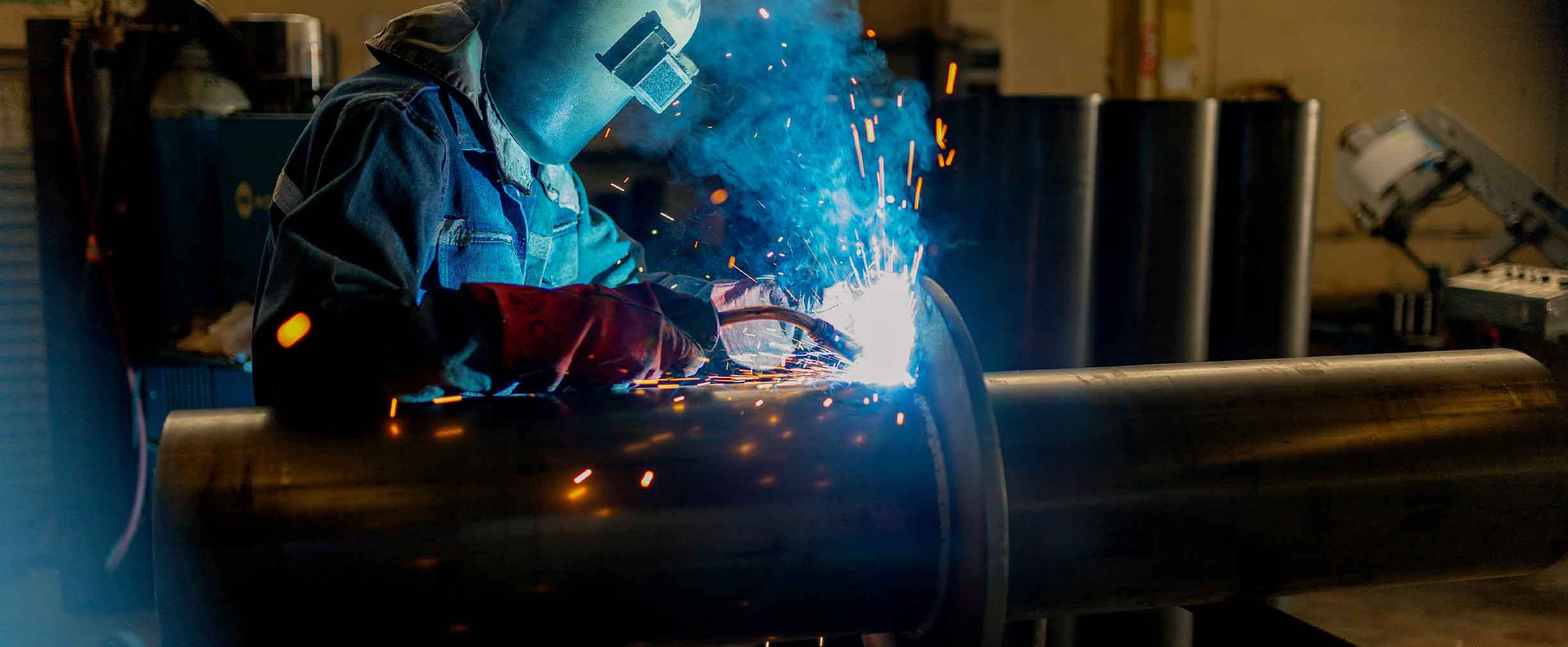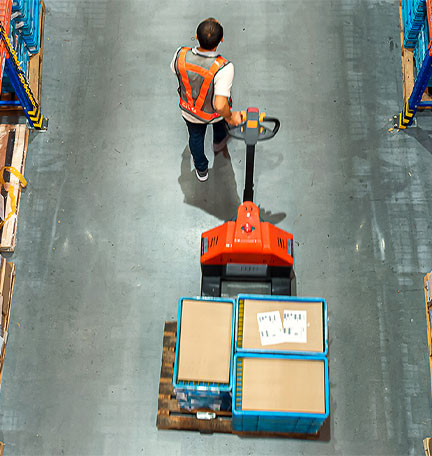We take a closer look at the factors influencing the manufacturing industry in Indiana, from supply-chain disruption to automation.
With over 7,000 manufacturing firms and 93,000 manufacturing jobs added since 2009, it’s no wonder that Indiana calls itself “the State that Works.” In fact, more than $100 billion of Indiana’s economic output is based in manufacturing, and the state has the highest concentration of manufacturing jobs in the country.
According to Sam Issermoyer, Capital Portfolio Manager at Regions Bank, manufacturing in Indiana is thriving because of — and sometimes despite — changes in automation, skilled labor, and supply chains.
Strong Employment and Diversification
As of 2021, Indiana enjoys a 3.9 percent rate of unemployment, compared with the national average of 6.1 percent. Erik Miner, Commercial Banking Team Leader and Market Executive for Regions Bank in Indiana, attributes this financial health to a diversified manufacturing industry, which has led more companies to expand their operations in the state, promoting further growth and strong employment relative to the rest of the country. While the manufacturing industry took a hit during the peak of the pandemic, data from the Federal Reserve Bank of St. Louis and the U.S. Bureau of Labor Statistics shows that manufacturing jobs in Indiana have nearly bounced back to pre-pandemic figures: 526,000 workers in 2021, compared with 539,000 in 2019.
Historically, Indiana has been well-known as an auto hub — according to the Indiana Economic Development Corporation, they’re second in the nation for overall automotive production by GDP and housing over 500 automotive parts suppliers. Over the last two decades, however, the state’s manufacturing industry has undergone mass diversification spanning nearly every facet, including steel, pharmaceuticals, chemicals, oil and gas equipment, and aerospace. Today, the state is home to some of the country’s major manufacturing companies, including Eli Lilly, which employs more than 10,000 workers alone. Indeed, advanced manufacturing outside of automotive has seen a boom in Central Indiana and the state as a whole.
Competitive Economic Conditions for Companies
According to both Miner and Issermoyer, much of Indiana’s manufacturing growth can be attributed to the relatively low cost of doing business in the state. Ranking No. 12 on Forbes’ “Best States for Business” list, Indiana’s competitive corporate income tax rate — which dropped to 4.9 percent as of July 2021 — has helped attract both new and mature firms.
The state is also proactive when it comes to providing grants. At the height of the COVID-19 pandemic, for example, Indiana proactively offered incentives and grants to support the manufacturing industry. “Indiana has considered influencing factors to help provide support across the full spectrum,” notes Miner. “In doing so, they’re enlisting a more inclusive, innovative, and long-term approach.” For example, the Indiana Manufacturing Readiness Grants program allocated $4 million to match investments in new equipment and machinery. Similarly, the $10 million Economic Activity Stabilization & Enhancement (EASE) program targeted technology and operational advancements in Indiana’s manufacturing industry.
High Quality of Life for Workers
Indiana’s wealth of universities — including Indiana University Bloomington, Notre Dame, and Purdue University — is a draw for companies looking for a wide talent pool. The state is also appealing for workers just starting their careers. Indiana’s strong educational base and roster of influential companies — such as Salesforce, Toyota, Subaru, and major bio-life sciences companies — provide greater opportunities for employment, particularly for those interested in advanced manufacturing.
In addition to low employment rates and a diverse range of employers to choose from, workers who plant their roots in the state can also enjoy a high standard of living. With a mean hourly wage of $23.57, affordable housing rates, modest property taxes, and a cost-of-living index rating of 95.3, Indiana is an attractive location not only for manufacturing companies, but also for industry professionals.
While automation in manufacturing remains a key concern for many in the industry, Issermoyer notes that it may actually lead to more opportunity for Indiana’s skilled workers. “People are demanding more compensation for the increased risk,” he explains, noting that higher-paying engineer jobs will likely increase, as will the need for people who can work with machines.
“Indiana is not immune to what is occurring in the industry as a whole,” Issermoyer notes, pointing to the current labor shortage that exists across manufacturing sectors. He adds this shortage will likely drive further automation over the next five to 10 years, leading to an increased need for skilled laborers.
Automation intersects heavily with another major concern: supply chain disruption. Miner observes, “You can’t talk to a manufacturing company today without hearing two themes: skilled labor and supply chain.”
Indiana's Value to the Supply Chain
One of Indiana’s greatest strengths is its central location. For example, Indianapolis is just one day’s drive from 60 percent of the contiguous U.S. Not only do the state’s pass-through highways rank No.1 in the nation, but it also ranks No.4 in railcar load. According to Indy Partnership, the state’s train system ranks No. 7 in volume for NAFTA exports — an estimated $16 billion segment.
The result is a natural logistical hub around Indianapolis. “The ability to ship goods and material from a central location is why you’ve seen Amazon, FedEx, and others establish facilities in Indianapolis,” says Miner. And that growth continues: In April 2021, Apple announced a $100 million distribution center in Clayton.
More importantly, this accessibility sets the state up to be a strategic hub for supply chain continuity — something that became increasingly important in the wake of the pandemic. “Being able to control your supply chain will be an evolving theme over time,” Issermoyer says, noting that much of the manufacturing industry’s focus over the next few years could rely on reshoring a fragile delivery system.
But while Indiana can deliver, it’s not invulnerable to ongoing disruption. “There are spring manufacturers that can’t get their parts — and they can’t pass it along to auto manufacturers,” explains Issermoyer.
The 2008 financial crisis has also had a lasting impact on the state’s supply chain. Issermoyer notes that because so many base metal and lumber suppliers went out of business during that period, those that survived are conservative and are reluctant to increase capacity. “There’s rampant market demand — it’s like a frozen slingshot,” he says.
Still, Indiana may stand to benefit from the supply chain vulnerabilities many other states are grappling with. “Supply chains grind to a halt, and one delay leads to another delay, which leads to scrambling,” Issermoyer explains. “As a result, companies are rethinking supply chains and keeping them closer to home, which will bode well for companies in Indiana.”
The Future of Manufacturing in Indiana
According to McKinsey, manufacturing’s outsized economic contributions and growing output over the past 20 years could promote long-term US recovery. However, U.S. shares of global manufacturing GDP and gross sales have declined over the same period, leading to some calls for a “now or never” investment in the industry.
This is an area where Indiana has already led the pack — and business is booming as a result. Issermoyer says, “If you drive down I-65 or across I-70, you can’t help but notice the amount of warehouses and new businesses going up.” And, at the same time, manufacturing activity is expected to remain high. Yet the labor market is shrinking, so Indiana’s focus will shift to getting people back into the workforce, particularly as automation increases.
“That’s the biggest issue: figuring out that puzzle,” says Issermoyer. “Automation is here and it’s going to keep ramping up.”
Find out how our Indianapolis office can help your business succeed. Contact your local Regions relationship manager, or visit regions.com/commercial-banking.











